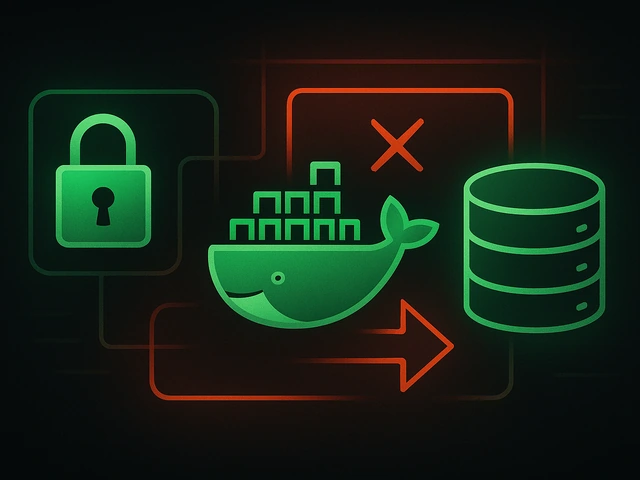
According to statistics, the vast majority of sites on the Internet are hosted on servers running Unix-like systems, most often the Linux family. This is motiva...
3v-Hosting Blog
6 min read
Creating custom Docker images is a powerful way to tailor software environments and applications to meet specific needs. Docker, as a containerization platform, allows developers and system administrators to create lightweight, consistent, and portable environments that can run applications with all their dependencies. In this article, we’ll explore the steps required to create your own Docker image, discuss best practices, and provide insights on Docker image optimization.
A Docker image is essentially a snapshot of a filesystem that contains everything needed to run an application: code, runtime, libraries, environment variables, and configuration files. Docker images are used to create containers, which are isolated environments that run instances of these images. In the process of Docker image creation, you take an existing base image (like an official Ubuntu or Node.js image) and customize it to include your application's dependencies, environment settings, and configurations.
Creating a custom Docker image provides several advantages, especially when managing multiple environments or deploying applications to various platforms. A custom image allows you to:
- Include only necessary dependencies, reducing the size of your image.
- Standardize environments across development, testing, and production.
- Make deployment more efficient and consistent.
- Optimize performance by tailoring configurations specifically for your application.
Custom Docker image creation also enhances reproducibility, as every member of a team can work with the same environment, eliminating the "it works on my machine" issue.
Creating an image is done by writing some instructions, a script, according to which the future image will be created. This script is written in a specialized file - Dockerfile. And the first step in creating your Docker image is choosing a base image. Docker provides a wide range of official images, including operating systems (e.g. Ubuntu, Alpine Linux) and development environments (e.g. Node.js, Python). You can browse the Docker Hub repository to find a suitable base image for your application.
Example:
FROM ubuntu:20.04
In this example, we are creating a Docker image based on Ubuntu 20.04. Using a small, efficient base image is a Docker image optimization best practice.
The core of Docker image creation lies in the Dockerfile. A Dockerfile is a text file containing a series of instructions that define how the Docker image should be built. The Dockerfile tells Docker which base image to use, which dependencies to install, how to configure the environment, and more. Each instruction in the Dockerfile represents a layer in the final Docker image.
Here’s a simple Dockerfile that creates a custom image for a Node.js application:
# Use an official Node.js runtime as the base image
FROM node:14
# Set the working directory in the container
WORKDIR /usr/src/app
# Copy the package.json and install dependencies
COPY package*.json ./
RUN npm install
# Copy the application code
COPY . .
# Expose the application port
EXPOSE 8080
# Define the command to run the application
CMD ["node", "app.js"]
This example illustrates how to use Dockerfile instructions to build and run Docker images for a Node.js application. By following this approach, you can tailor the environment to your application’s needs.
Once the Dockerfile is ready, the next step is to build the Docker image using the docker build command. This command processes the instructions in the Dockerfile and creates a new Docker image based on those instructions.
Example:
docker build -t my-custom-node-app .
The -t flag allows you to tag the image with a name, in this case, "my-custom-node-app". Docker will execute each line in the Dockerfile and create the layers accordingly.
After building the Docker image, it’s essential to test it by running it as a container. The docker run command allows you to instantiate a container from the image and check whether it behaves as expected.
Example:
docker run -p 8080:8080 my-custom-node-app
This command runs the container and maps port 8080 of the container to port 8080 on the host machine, allowing you to access the application running inside the container.
When creating Docker images, it’s crucial to optimize the process to minimize image size and ensure faster deployment. Here are some best practices for Docker image optimization:
Use small base images: Alpine Linux is a lightweight base image that can significantly reduce the final image size compared to larger distributions like Ubuntu.
Limit the number of layers: Each instruction in the Dockerfile creates a new layer in the final image. To reduce the image size, combine multiple instructions into a single layer where appropriate. For example:
RUN apt-get update && apt-get install -y \
curl \
git
Clean up after installations: Remove temporary files, cache, and unused dependencies after installations to keep the image lean.
RUN apt-get update && apt-get install -y curl && \
rm -rf /var/lib/apt/lists/*
By following these best practices, you can create efficient, lean Docker images that are easier to distribute and deploy.
A well-structured Dockerfile can make the difference between an efficient image and one that is bloated or difficult to maintain. Here are a few Dockerfile best practices:
Leverage multi-stage builds: Multi-stage builds allow you to separate the build environment from the final runtime environment, reducing the size of the final image. For example, you can use one stage to build your application and another to create the runtime environment with only the necessary files.
Order instructions for caching: Docker caches the results of each instruction in the Dockerfile. By ordering instructions that change frequently (such as code changes) later in the file, you can take advantage of caching and reduce build times.
Use .dockerignore: Similar to .gitignore, a .dockerignore file tells Docker which files or directories to exclude when building the image. This prevents unnecessary files (e.g., logs, temporary files) from being included in the final image.
Once you’ve built and tested your Docker image, you may want to share it with others. Docker Hub and other container registries allow you to store and distribute your images.
To push an image to Docker Hub:
Tag the image:
docker tag my-custom-node-app username/my-custom-node-app
Push the image:
docker push username/my-custom-node-app
By pushing your image to a registry, you can easily share it with team members or deploy it to cloud platforms like AWS.
Creating your own Docker image offers a flexible and powerful way to package and distribute applications. By following a structured approach to Docker image creation—choosing an appropriate base image, writing a Dockerfile, and following best practices for optimization—you can build custom Docker images tailored to your specific needs. Properly managing Docker images is essential for efficient software development, deployment, and scaling in modern, container-based environments.

Effective backup strategies for Docker applications: how to protect volumes, data, and configurations while avoiding common mistakes, and quickly restore servic...

A clear guide to what VPS is used for: real cases, examples for developers, business setups, VPN, CI/CD and more. Learn how to choose the right VPS plan.

SOLID principles help create flexible, scalable, and maintainable code. We break down SRP, OCP, LSP, ISP, and DIP with examples and practical recommendations.